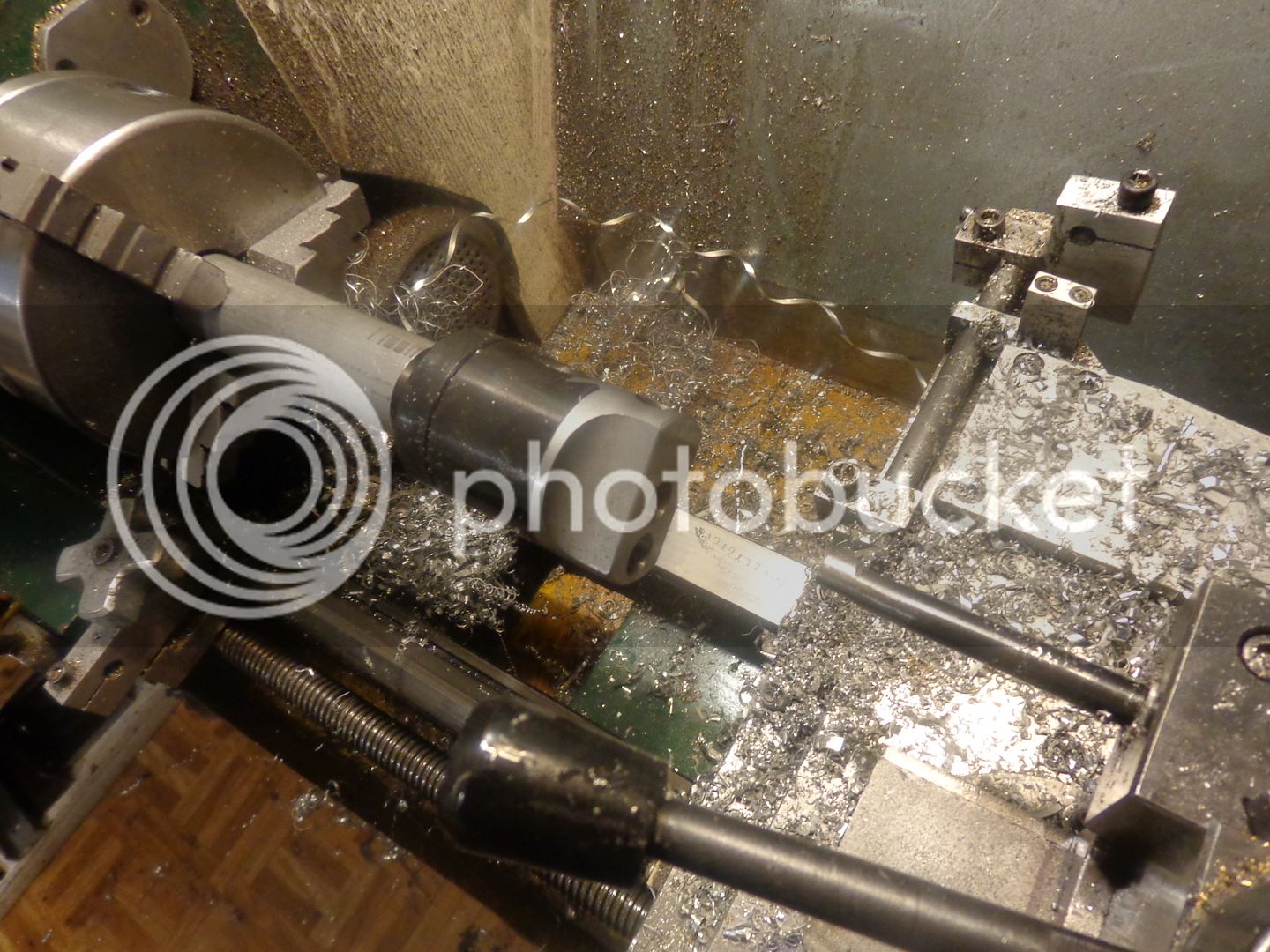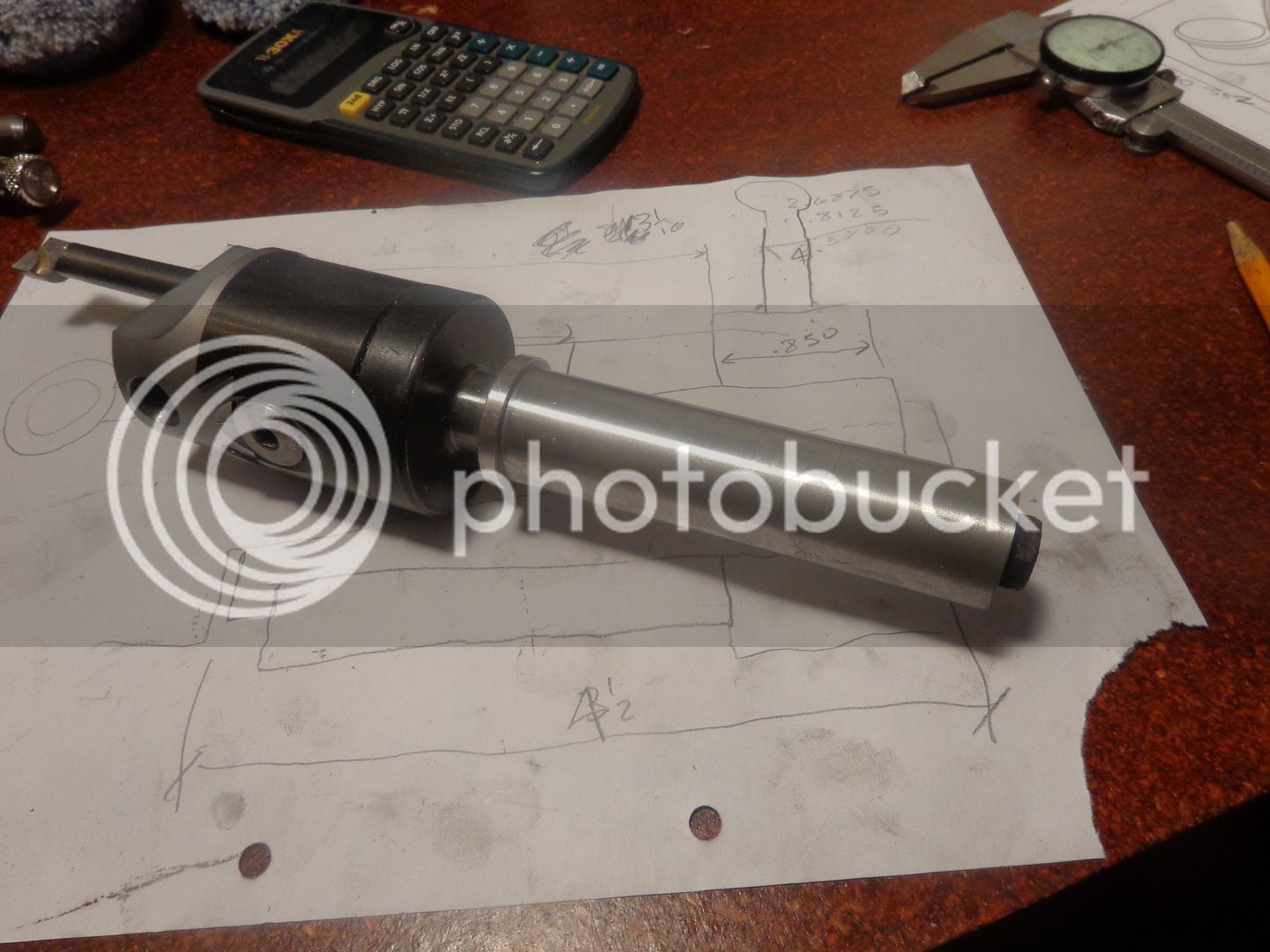I have a lathe and mill which both came stock with MT2 tapers in the headstock of the mill and the tailstock of the lathe. I want to make a piece of tooling with an MT2 internal taper, which if I succeed will eventually hold my boring head, possibly to make a ball turner. The first trick I have to master of course, is to be able to set my topslide over to the precise angle of an MT2 taper. I don't really have to know what that angle is---I just have to precisely match it. I do have an adapter which I purchased for something, which has one end turned to a true diameter, with an external MT2 taper on the shank. I chucked up the true diameter portion, and then made an adapter from a piece of 1/2" thick aluminum which I could hold in one of the toolholders for my AXA toolpost and clamp the shank of my dial indicator in. With the height of the dial indicator set exactly on the centerline of the lathe chuck axis, I endeavoured to get the topslide angle perfectly aligned with the shank of the MT2 part, so that by cranking the topslide in and out over its full travel of about 3" I would get no deviation in the reading of the dial indicator. This was not an easy thing to do. I would be ashamed to tell you how many times I had to adjust it and tap it this way and that way until I ended up with no dial indicator movement over the full travel. However, I finally reached that "o" movement of the dial indicator.--More to follow.









